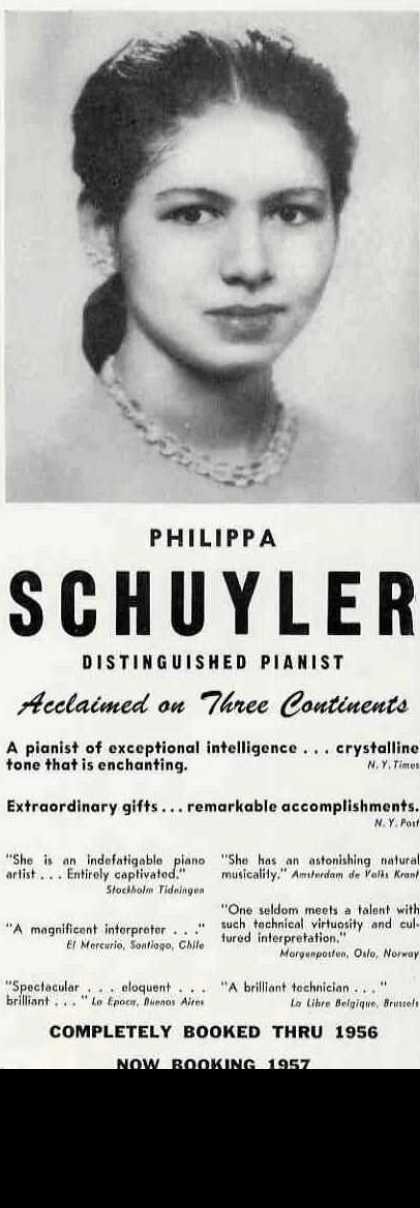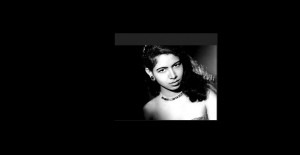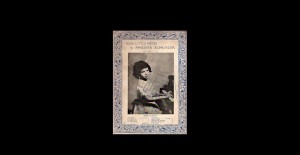
Philippa Schuyler 1956 advertisement
Saint-Saens
Piano Concerto No. 2 in G Minor, Op. 22
The American pianist Philippa Schuyler made her concert debut while still a child, giving piano recitals and frequently appearing on the radio. Born in 1931, the mixed-race child was the daughter of a prominent black writer and essayist, George S. Schuyler, and a white Texas socialite, Josephine Cogdell. Schuyler and Cogdell believed that together they could produce an extraordinary child who would become the answer to the US’s growing racial divide and social problems.
Philippa’s mother believed in raw foods and had the stove removed from her Harlem kitchen. Neither vegetables nor meat were cooked but were eaten raw. Philippa Schuyler’s biographer, Kathy Talalay, reported that when she interviewed the people who next took over the apartment, they, indeed, had to reinstate a normal kitchen.

Philippa Schuyler in the 1940s
Her self-belief was damaged when her parents showed her their clippings file where they had acknowledged publically that she was, in fact, a racial experiment. Everything that she’d worked for herself was cast into doubt. Since this revelation occurred during her teen years, it had a terrible effect on her development. In her later European appearances, she tried to reject her black heritage and appeared as an unknown Spanish pianist, Filipa Monterro. She attempted to create a new life for herself, rejecting many of her parents’ values and becoming a feminist.

Philippa Schuyler scores
Although not widely remembered today, she is memorialized by the Phillipa D. Schuyler Junior High School in Bushwick, Brooklyn, which offers an arts-focused curriculum.

Terribly sad….am speechless!!